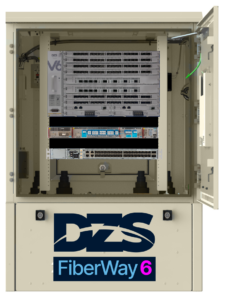Hope is on the way for many areas on the “wrong side” of the digital divide. These communities have remained unserved or underserved for years for a variety of reasons ranging from challenging remote locations to challenging operational conditions to service provider apathy. Conventional wisdom often dictated that service providers couldn’t justify the ROI of serving these areas, and thus these communities were bypassed.
The potential for high-speed fiber broadband to impact local economies and quality of life is enormous, and thankfully governments around the world have recognized a need to provide grants and incentives to successfully bridge the digital divide. The current availability of well over $100 billion in stimulus and matching funds in the U.S. alone represents a significant potential funding source for applicants looking to bring high-speed fiber broadband to unserved and underserved communities where traditional business cases didn’t historically compute.
Lots of progress is already being made, but qualifying for the largest broadband stimulus grants and/or loans is really just beginning in earnest. Service providers that plan to set-up and serve these communities are heroes involved in the noble cause of bringing world-class broadband to these areas. That said, these stimulus funds are just the start, and these same heroes need to step-back and ensure that they have strategized for the long run, well past when these stimulus funds will eventually end. Successful awardees will use these funds as a catalyst for path to connectivity for the members of these communities, but simultaneously position themselves for sustained success in these same challenging markets.
 To do so, operators need solutions that not only meet today’s gigabit broadband requirements but also can address rapidly emerging multi-gigabit demands in these communities with minimal disruption and maximum investment protection. Addressing the unique challenges of serving, supporting, and managing broadband access to these communities, often rural, takes a comprehensive, tailored approach that innovates beyond simple point products. For many of these service providers, someone needs to show them the path to success.
To do so, operators need solutions that not only meet today’s gigabit broadband requirements but also can address rapidly emerging multi-gigabit demands in these communities with minimal disruption and maximum investment protection. Addressing the unique challenges of serving, supporting, and managing broadband access to these communities, often rural, takes a comprehensive, tailored approach that innovates beyond simple point products. For many of these service providers, someone needs to show them the path to success.
At DZS we believe that there are 3 crucial innovations that rural service providers need most to efficiently span the access edge, optical edge, subscriber edge and cloud edge of their networks and deliver the next-generation communications services that will allow them to thrive in the digital age:
One: Environmentally hardened access and transport solutions
Remote unserved and underserved areas typically have minimal existing communications infrastructure. Investing in temperature-controlled cabinets or equipment huts can be prohibitively expensive and sap precious revenues with ongoing maintenance and energy costs. Hardened access and transport solutions minimize these expenses and can be rapidly deployable with minimal upgrades to existing infrastructure.
Two: Highest performance and scalability
While gigabit-class services are now the starting point for many new deployments, multi-gigabit service demands are already emerging along with new applications like “virtual reality” (VR/AR/XR), 8K video, and remote collaboration. Likewise, Edge Access solutions are starting at 10G XGS-PON today but in the future will require an upgrade 50G PON—ideally without service interruption or replacing current investments. Edge Transport solutions that aggregate these Edge services will need to scale up along with these exploding data rates, while covering the long distances that rural deployments often require.
Three: Remote service assurance and experience management
For operators that need to make a long-term business case for rural deployments, minimizing churn and maximizing new service revenues are top priorities. Success will require tools that meet shorter-term reporting requirements for broadband stimulus programs plus AI-driven network service assurance and Wi-Fi home experience management. Also critical will be reliable and flexible orchestration, automation, and service lifecycle management solutions to reduce truck rolls, improve customer experience, and allow for on-demand, remote delivery of new services.
Introducing DZS FiberWay solutions
Specifically designed to meet the needs of service providers addressing unserved and underserved areas and put them on a path for rapid and sustainable success, DZS FiberWay is a first-of-its-kind solution family that delivers an all-in-one, cost-effective, and future-ready combination of systems and software ideally suited for remote deployments. Providing environmentally hardened coherent optics, exceptional reach, and non-blocking multi-terabit capacity, DZS FiberWay is optimized to address remote operators’ real-world challenges across middle-mile, last-mile, and in-home networks—while supporting an in-place upgrade to 50G PON when required.
Offering modular flexibility in compact form factors for quick scalability and long reach, DZS FiberWay is available in three base configurations and is customizable to specific deployment needs, always with a clear path to sustained operator success:
- DZS FiberWay1 – Starts with a fixed form factor DZS Velocity V1 OLT that can support over 2,000 subscribers, augmented by the new DZS Saber 4400 coherent optical metro and edge transport platform, DZS M4000 router and DZS Cloud software.
- DZS FiberWay2 – Starts with a 2-slot, 2RU chassis that can support over 4,000 subscribers, augmented by the new DZS Saber 4400 coherent optical metro and edge transport platform, DZS M4000 router and DZS Cloud software.
- DZS FiberWay6 – Starts with a 6-slot, 6RU chassis that can support up to 25,000 subscribers, augmented by the new DZS Saber 4400 coherent optical metro and edge transport platform, DZS M4000 router, and DZS Cloud software.
Each DZS FiberWay solution can optionally include a DZS cabinet sized and configured for maximum efficiency. DZS also offers a wide range of DZS Helix ONTs, DZS CloudCheck certified Wi-Fi gateways and access points to fit customer-specific operational demands. DZS can also recommend and integrate with other complementary and environmentally hardened products like co-existence elements if the customer so desires.
DZS is Build America, Buy America Ready
Service providers leveraging Broadband Equity, Access, and Deployment (BEAD) or other program funds contingent upon Build America, Buy America (BABA) restrictions can rest assured that Texas-based DZS is BABA-ready. DZS has a long history of US-based manufacturing and has strong relationships with contract manufacturers with US manufacturing operations. DZS professional services staff and partners can work closely with our North American clients to streamline planning, installation and deployment.
Next steps
Service providers committed to bridging the digital divide should plan and partner strategically to maximize their broadband stimulus opportunities. DZS FiberWay is the only end-to-end solution expressly architected to solve rural deployment middle- and last-mile challenges, enabling service providers to meet or exceed stimulus program requirements while achieving long-term success in their markets.
To learn more about DZS FiberWay, read more about the Fast Path to FTTH initiative.



 '
'